Pushpagiri Temple Complex,
Kadapa – The Temple Complex
The temple complex is located at 380 metres (1,000 ft) above the sea level and covers an approximate area of 7.5 square kilometres (2.9 sq. mi). There is lush greenery surrounding the hamlets that include in the temple complex with crops watered from the rain as well as the river year-round. The temples in this complex are engraved with sculptures depicting Dasavathara, Shaiva mythology, Ramayana, Mahabharata and Bhagavata. The temple complex has 28 temples which are still extant. There are several dilapidated shrines can be seen in the Pushpagiri area.
The major temples in the complex
are listed below;
·
Chennakesava Swamy Temple
·
Vaidyanathesvara Swamy Temple
·
Santana Malleswara Swamy Temple
·
Trikuteswara Swamy Temple
·
Indranatha Swamy Temple
·
Kasi Viswanatha Swamy Temple
·
Bhimesvara Swamy Temple
·
Kamalasambhaveswara Swamy Temple
·
Sakshi Malleswara Swamy Temple
·
Agasthyeswara Swamy Temple
·
Pathala Ganapathi Temple
·
Uma Maheshwara Temple
Chennakesava Temple:
This temple is situated on the eastern bank of Penna River. This temple is also called as Shiva Kesava Swamy temple. This temple is facing towards west with five tiered Rajagopuram. The temple can be accessed through flight of steps arising out from the river. Dwajastambam can be seen immediately after the Rajagopuram. This temple has three shrines inside and two sub shrines outside the elevated platform. The shrines inside the platform have the main deity of Chennakesava and Santana Malleshwara Swamy.
The Chennakesava shrine is facing towards west. It houses a 10 feet tall idol of Chennakesava Swamy in standing posture. The Thiruvasi of the idol is depicted with Dasavathara of Lord Vishnu. The Santana Malleshwara Swamy Shrine and the Chennakesava Swamy Shrine are separated by a ridge so that a Parikrama can be done for individual shrines. There is another small shrine once housed an idol of Uma Maheswara in seated posture. Currently, this shrine is vacant. A relief of Uma Maheswara can be seen in the back wall of the shrine.
There is another sub-shrine housing a Shiva Linga called as Sakshi Malleshwara Swamy in the courtyard towards the north east side of the elevated platform. There is a shrine for Rajyalakshmi Devi, the consort of Chennakesava Swamy. There is a mandapa, situated to the right side of her shrine. Hanuman shrine can be reached by climbing down few steps from this Mandapa.
This Hanuman Shrine seems to have been added to the complex at a later stage. The idol of Anjaneya here is in the form of an ascetic. He is in a standing posture with folded hands. He has no crown on the head; instead a tuft of hair around can be seen bound by his tail. Anjaneya here wears only a loin cloth. Theertham associated with this temple are Amrutha Sarovar and Pinakini River. Amrutha Sarovar is believed to have magical powers to reverse ageing.
The temple is embellished with elaborate carvings and sculptures on the walls and pillars. Few of them are Lord Shiva in dancing posture with 8 & 4 hands, Yoga Narasimha, Nataraja, Shiva Parivar, Bhakta Kannappa, Dasavathara, Krishna preaching Gita to Arjuna, Kirata Moorthy, Anantasayana Vishnu, Mahabharata & Ramayana legends, Arjuna taking Pasupathastra from Lord Shiva, carvings of animals & warriors, floral motifs and Mahishasura Mardini etc. Imprints of Lord Vishnu and Lord Shiva can be seen here. The foot print of Siva became famous as Rudra Padam and Maha Vishnu as Vishnu Padam.
Vaidyanatha Swamy Temple:
The Temple is situated to the southeast of Trikuteswara temple on the west bank of Penna River. This temple is facing towards west with three tiered Rajagopuram. It is believed to be built by Cholas. The temple consists of two shrines one dedicated for Vaidyanatha Swamy and another for Kamakshi Devi. Vaidyanatha Shrine is guarded by two Dwarapalakas. The Maha Mandapam of Vaidyanatha Shrine has 16 pillars arranged in two squares.
The Kamakshi shrine has the Srichakra on the left as one enters the temple from the northern tower-gate. It is said that the Srichakra is believed to have been worshipped by Adi Sankaracharya and later by Vidyaranya Swamy, the founder of the Vijayanagar Empire. This temple is adorned with a variety of rock-cut sculptures and reliefs of various Hindu Gods and Goddesses. This temple houses various idols of the Hindu deities and Hero Stones that were excavated and preserved by the Archaeological Survey of India (ASI).
This Temple is situated on the northern bank of the Pinakini river just opposite to the village of Pushpagiri. The temple can be accessed through flight of steps arising from the river. This temple is facing towards east with a dilapidated Rajagopuram and a spacious courtyard. The Rajagopuram is slightly towards the south-west of the temple.
There is a Mandapa towards the left supported by 12 pillars sculpted in perfect harmony. Sthala Vriksham is Vilwa tree, situated towards the north west side of the courtyard. The Sanctum Sanctorum consists Sanctum, Antrala and Mukha Mandapa. The Mukha Mandapa is supported by sixteen pillars and is surrounded by three shrines. The Sanctum houses a Shiva Linga but there is no worship carried out presently.
Nandi Mandapa can be seen facing the sanctum. All the sub shrines are present without their idols. The earliest reference to this temple was made in an inscription in 1078 CE which registers a land by the Ahavamalladeva of Vaidumba dynasty. Another inscription dated 1182 CE grants some land in the area of Mulakanadu for the daily worship of the presiding deity of the temple.
Trikuteswara Temple:
Trikuteswara Temple consists of three shrines namely Kamaleshwara Shrine, Hachaleshwara Shrine and Pallaveshwara Shrine. Hence, this temple consists of three shrines, it came to be called as Trikuteswara Temple. All these shrines were built in 1255 AD. All these shrines share a common Mukha Mandapa with each shrine on the south, west and north. Nandi housed in a four pillared Nandi Mandapa can be seen in the Sabha Mandapa.
Bhimeshwara Temple:
This Temple is situated to the east of Trikuteswara Temple. This temple is richly carved with figures of elephants, sages, mythological scenes on the walls and pillars of the temple.
Pushpagiri Mahasamsthanam:
The
Temple Complex also houses a Hindu religious institution (Jagadguru
Peetham) called Sri Pushpagiri Mahasamsthanam, established by Sage Vidyaranya,
in the lineage of Jagadguru Shankaracharya Peethams, with Sri Vidhya Shankara
Bharati Swamiji (49th Peethadhipathi) as its current Peethadhipathi
(the head). This is the only Advaita Mutt for the Telugu-speaking regions.




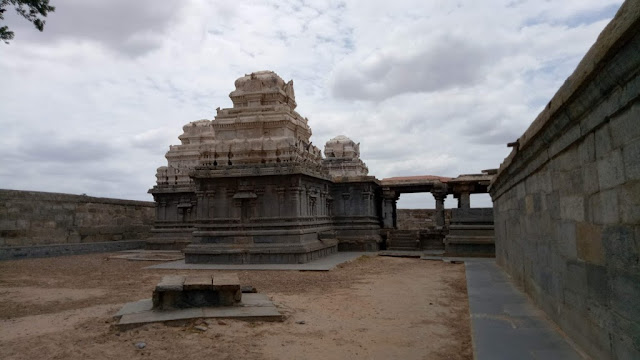





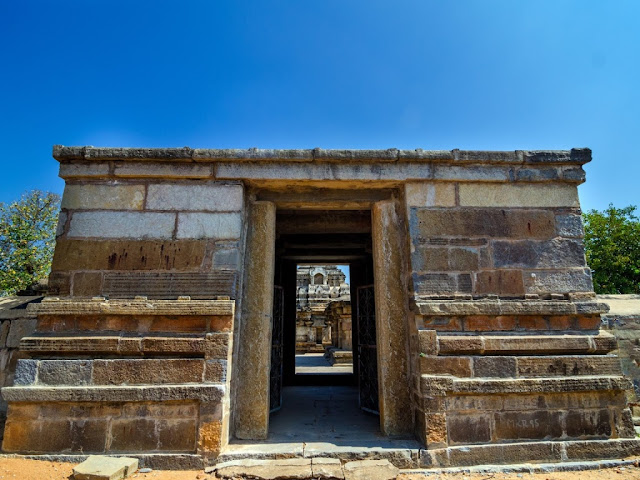




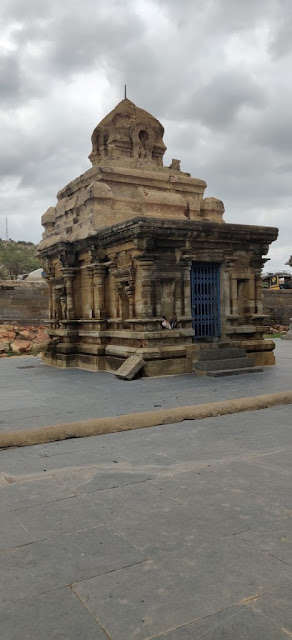
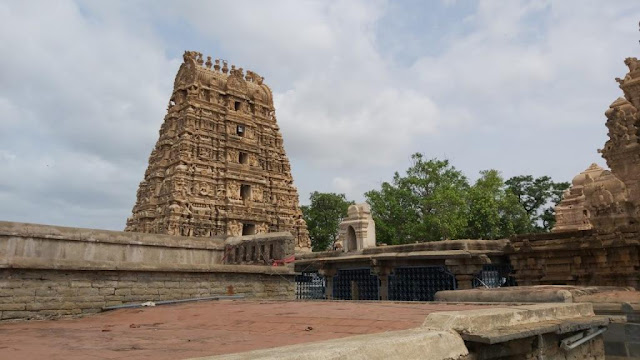

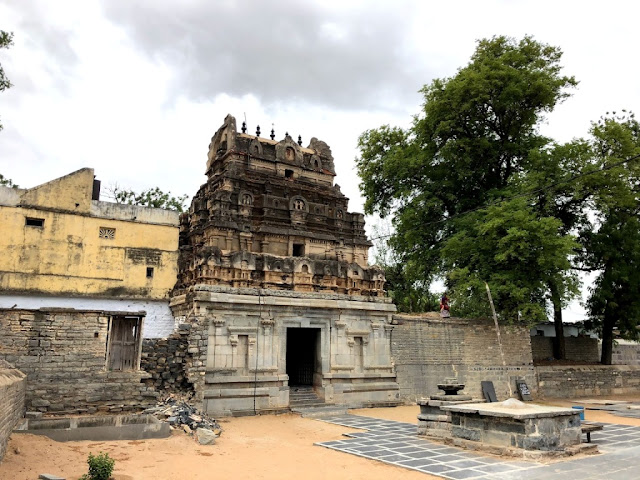





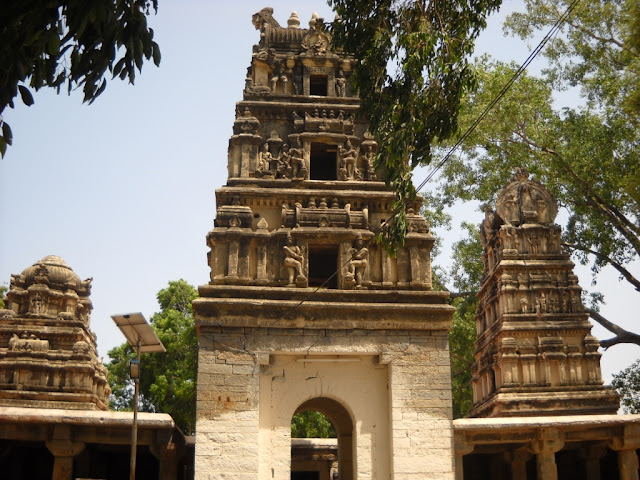
I want to know more about Lord Kiratha Rudra Moorthy ..Very less is known about him . Where can i get the mantras like Ashtotram , Sahasranamam of Lord Kiratha Rudra Moorthy .. Searching for a long time on him. If someone can help me that will be of great help to me an all
ReplyDelete